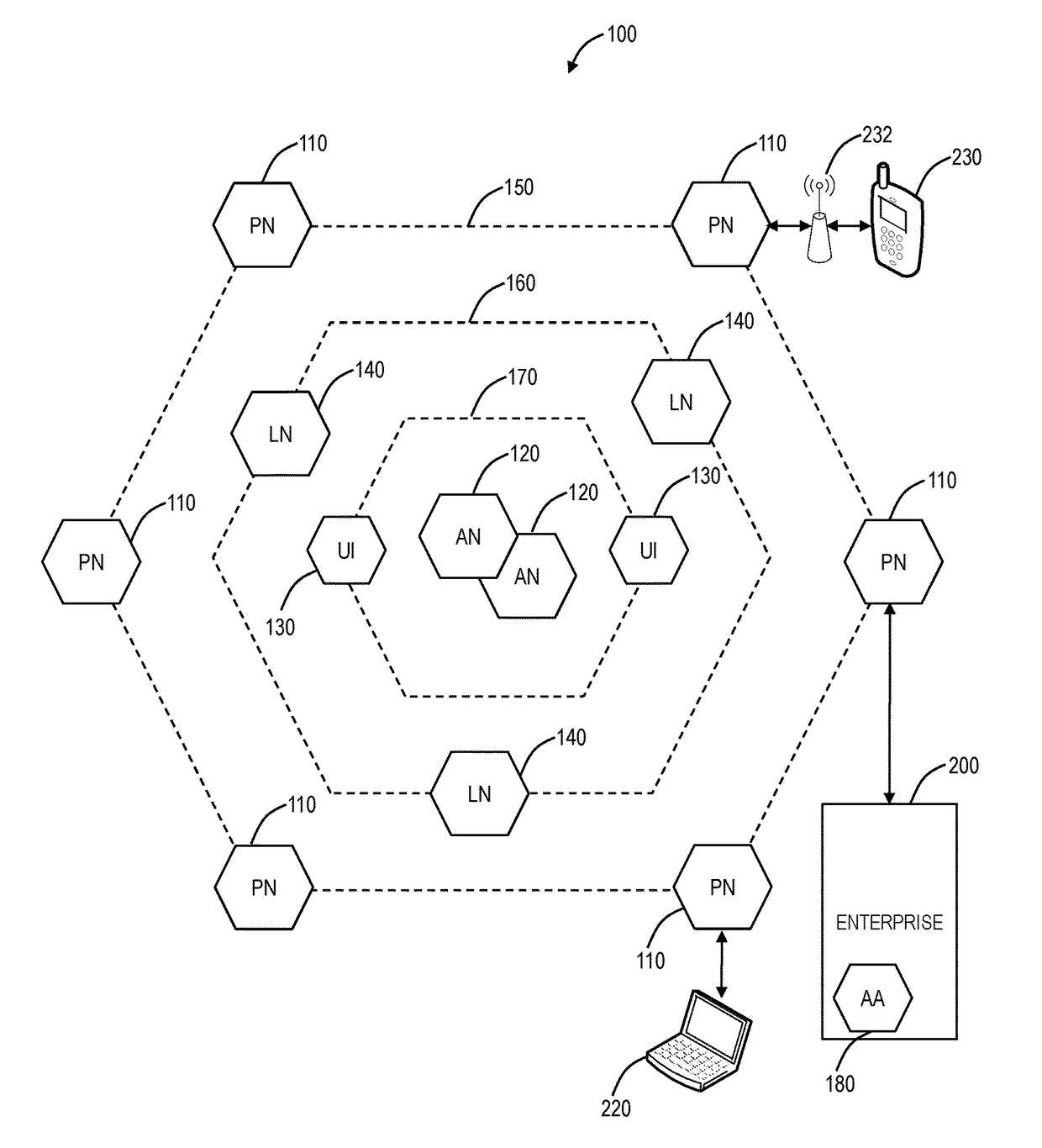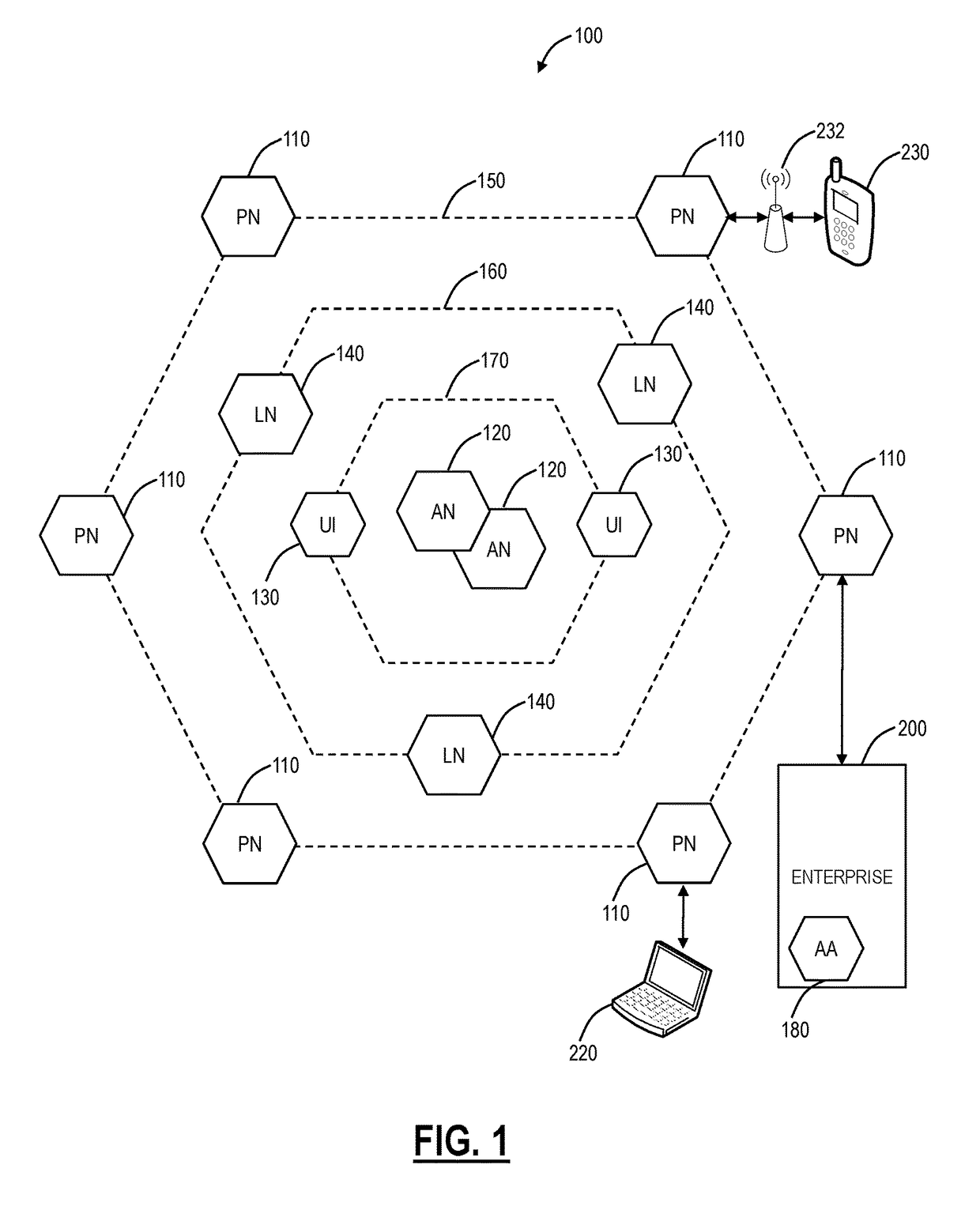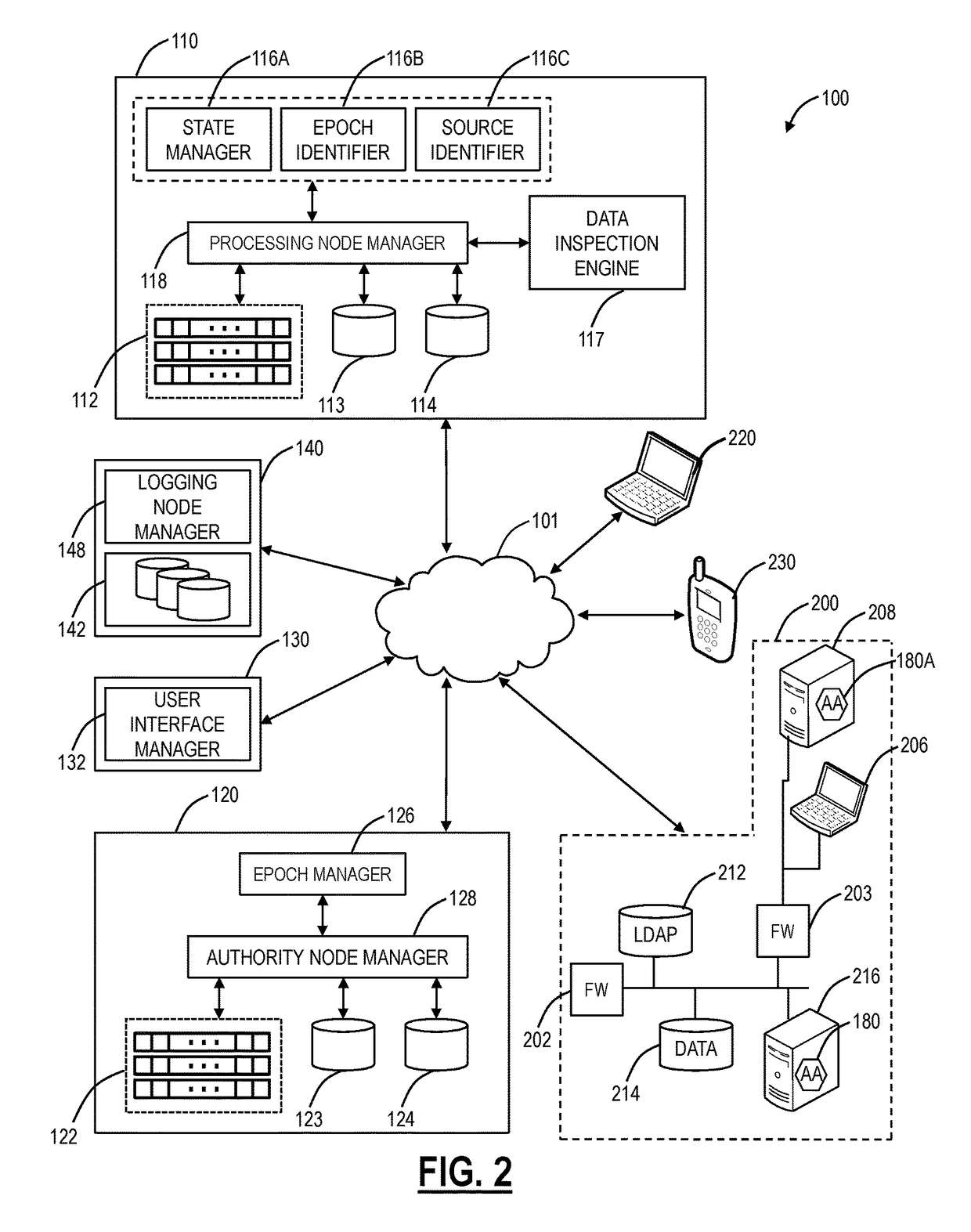Content delivery network protection from malware and data leakage
a content delivery network and data leakage technology, applied in the field of computer networking systems and methods, can solve the problems of only being detected and blocked for sophisticated attacks, being vulnerable to malware and security threats, and infecting millions of users worldwid
- Summary
- Abstract
- Description
- Claims
- Application Information
AI Technical Summary
Benefits of technology
Problems solved by technology
Method used
Image
Examples
Embodiment Construction
[0020]In various exemplary embodiments, CDN protection systems and methods are described. In particular, a distributed security system (a.k.a., a cloud-based security system) is overlaid and incorporated in the CDN network and associated connectivity to the Internet and origin servers. The distributed security system can include high-performance web proxies that inspect every web object transferred through it for malware and data leakage with a variety of techniques. In various exemplary embodiments, the distributed security system can be used to ensure malware is not propagated to the CDN as well as prevent data leakage therefrom. The distributed security system can provide various advantages including, for example, 1) anti-virus and anti-spyware controls, 2) file type detection and access controls, 3) sandboxing to detect and block behavior based threats, 4) data leakage prevention to detect and block any trade secret or confidential data leakage, 5) secure connectivity between ‘C...
PUM
 Login to View More
Login to View More Abstract
Description
Claims
Application Information
 Login to View More
Login to View More - R&D
- Intellectual Property
- Life Sciences
- Materials
- Tech Scout
- Unparalleled Data Quality
- Higher Quality Content
- 60% Fewer Hallucinations
Browse by: Latest US Patents, China's latest patents, Technical Efficacy Thesaurus, Application Domain, Technology Topic, Popular Technical Reports.
© 2025 PatSnap. All rights reserved.Legal|Privacy policy|Modern Slavery Act Transparency Statement|Sitemap|About US| Contact US: help@patsnap.com



